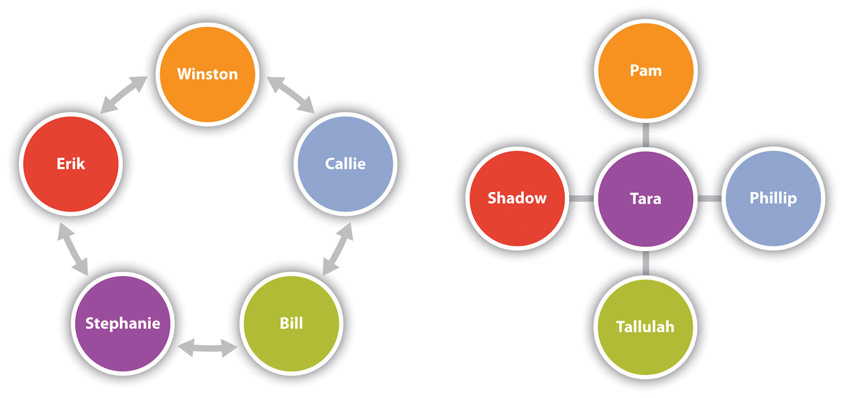Interaction Model of Communication
The interaction model of communication describes communication as a process in which participants alternate positions as sender and receiver and generate meaning by sending messages and receiving feedback within physical and psychological contexts. Wilbur Schramm, The Beginnings of Communication Study in America (Thousand Oaks, CA: Sage, 1997). Rather than illustrating communication as a linear, one-way process, the interaction model incorporates feedback, which makes communication a more interactive, two-way process. Feedback includes messages sent in response to other messages. For example, your instructor may respond to a point you raise during class discussion or you may point to the sofa when your roommate asks you where the remote control is. The inclusion of a feedback loop also leads to a more complex understanding of the roles of participants in a communication encounter. Rather than having one sender, one message, and one receiver, this model has two sender-receivers who exchange messages. Each participant alternates roles as sender and receiver in order to keep a communication encounter going. Although this seems like a perceptible and deliberate process, we alternate between the roles of sender and receiver very quickly and often without conscious thought.
The interaction model is also less message focused and more interaction focused. While the transmission model focused on how a message was transmitted and whether or not it was received, the interaction model is more concerned with the communication process itself. In fact, this model acknowledges that there are so many messages being sent at one time that many of them may not even be received. Some messages are also unintentionally sent. Therefore, communication isn’t judged effective or ineffective in this model based on whether or not a single message was successfully transmitted and received.
Figure 1.2 The Interaction Model of Communication

The interaction model takes physical and psychological context into account. Physical context includes the environmental factors in a communication encounter. The size, layout, temperature, and lighting of a space influence our communication. Imagine the different physical contexts in which job interviews take place and how that may affect your communication. I have had job interviews on a sofa in a comfortable office, sitting around a large conference table, and even once in an auditorium where I was positioned on the stage facing about twenty potential colleagues seated in the audience. I’ve also been walked around campus to interview with various people in temperatures below zero degrees. Although I was a little chilly when I got to each separate interview, it wasn’t too difficult to warm up and go on with the interview. During a job interview in Puerto Rico, however, walking around outside wearing a suit in near 90 degree temperatures created a sweating situation that wasn’t pleasant to try to communicate through. Whether it’s the size of the room, the temperature, or other environmental factors, it’s important to consider the role that physical context plays in our communication.
Psychological context includes the mental and emotional factors in a communication encounter. Stress, anxiety, and emotions are just some examples of psychological influences that can affect our communication. I recently found out some troubling news a few hours before a big public presentation. It was challenging to try to communicate because the psychological noise triggered by the stressful news kept intruding into my other thoughts. Seemingly positive psychological states, like experiencing the emotion of love, can also affect communication. During the initial stages of a romantic relationship individuals may be so “love struck” that they don’t see incompatible personality traits or don’t negatively evaluate behaviors they might otherwise find off-putting. Feedback and context help make the interaction model a more useful illustration of the communication process, but the transaction model views communication as a powerful tool that shapes our realities beyond individual communication encounters.